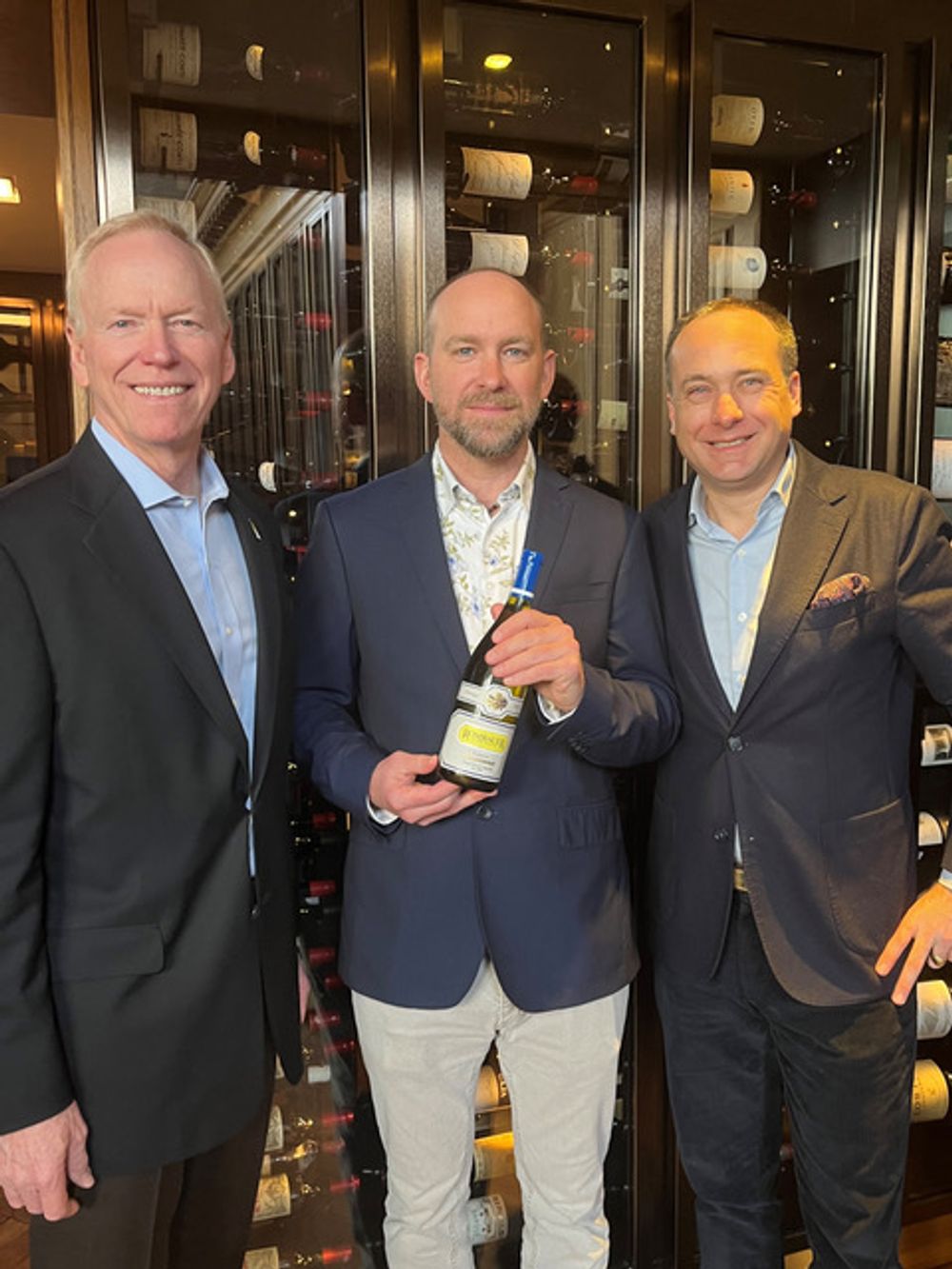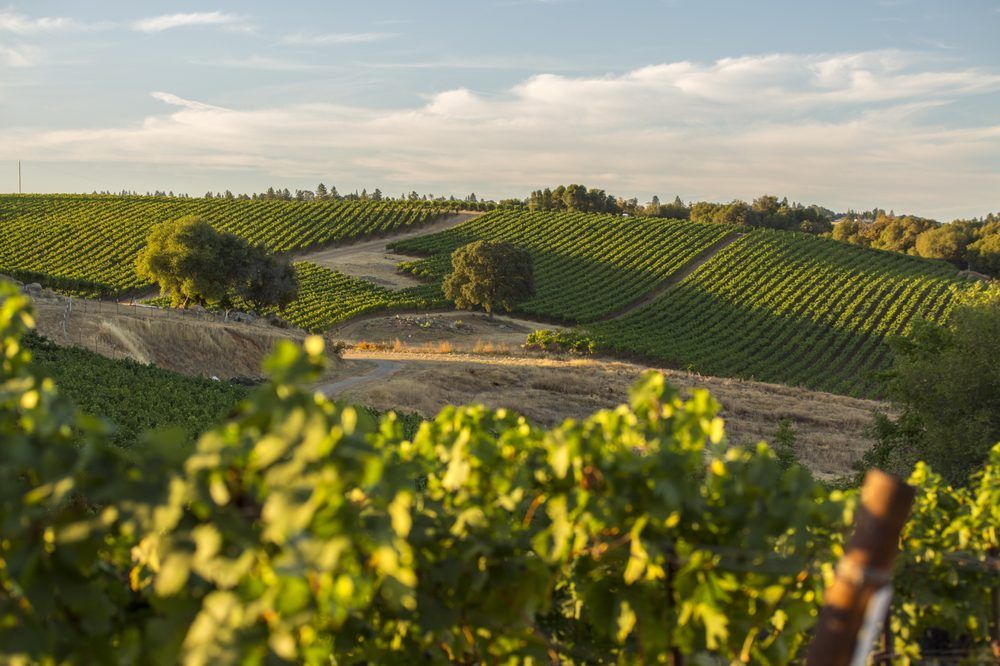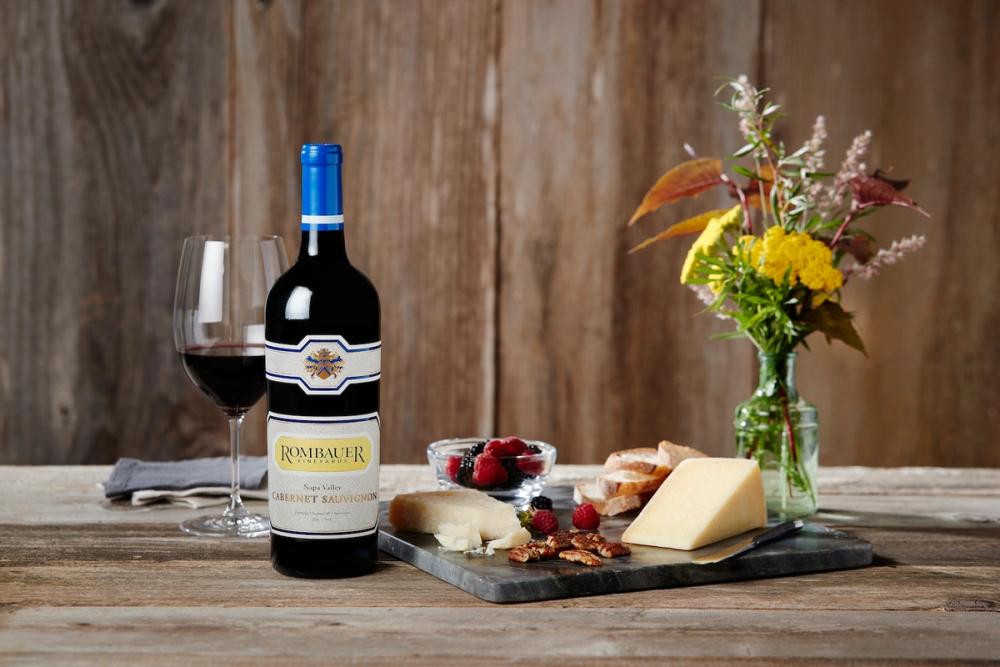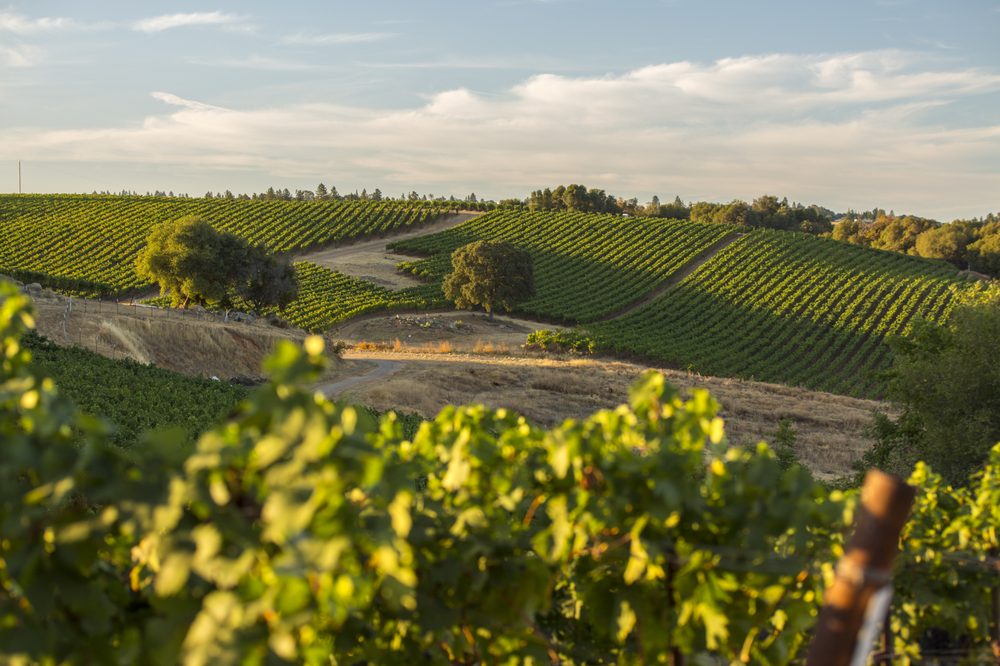Big changes are afoot in California’s wine industry, the fourth largest in the world and one of the most prestigious - Napa and Sonoma are household names even amongst non-wine drinkers. With most producers generally small to medium size, large companies have been stepping in to buy quality assets deemed to have growth potential.
Last October, Treasury Wine Estates snapped up Daou Wine Estates for a cool €1bn just weeks after E&J Gallo purchased the Hahn Family Wine portfolio, boutique producer Massican and high-end Rombauer Vineyards in a wave of purchase activity. It’s early days but the latter may prove to be the most significant of Gallo’s acquisitions, particularly for lovers of Napa Chardonnay and Cabernet Sauvignon.

Bob Knebel, CEO, Rombauer Vineyards, winemaker Richie Allen, Rombauer Vineyards, Edouard Baijot MW, director Luxury International Gallo (l-r)
Although an official price was not disclosed, Gallo bought three wineries, two tasting rooms, around 285 hectares of sustainable vineyards across northern California and, most importantly, the Rombauer brand. This is key because although Rombauer is one of the most highly regarded producers in Napa, it exports just a tiny proportion, which is something Gallo plans to change, as it continues to boost its premium wine offering.
“Rombauer has already become key to our portfolio and reflects our desire to become better recognised at the premium end, but the brand will continue to stand alone, building on a well-earned reputation for excellence,” says Edouard Baijot MW, head of E&J Gallo Luxury Brands, just back from a trip to Prowein with Rombauer president and CEO Bob Knebel and chief winemaker, Australian-born Richard Allen.
Sitting with his colleagues in the impressive wine library at 67 Pall Mall – surrounded by some of the wine world’s best-known bottles – Bob Knebel echoes this.
“We have always been uncompromising on quality, focused on just a few wines (Chardonnay, Cabernet, Zinfandel, Merlot, Sauvignon Blanc and a just -released Pinot Noir), and this will absolutely continue,” he says.

Gallo bought three wineries, two tasting rooms and around 285 hectares of sustainable vineyards across northern California
The Californian dream
The Rombauer story, to me at least, seems to be that of Napa Valley in miniature. There’s something of the California dream here.
The eponymous producer was established by California-born former pilot Koerner Rombauer and his wife Joan in 1980 after the couple first dipped their toes into winemaking in the 1970s. Seeking to bring their family up in a small-town environment, they had bought a hilltop home in St Helena and became partners in a wine-making venture.
As Knebel tells it, despite Koerner’s impressive flying background – he was a National Guard pilot before joining Braniff International – the couple, by then in their 40s, knew they needed something else in life which was fortuitous given that Braniff went bust in 1989.
The Rombauers built up the business slowly but steadily, bringing up their family and at the same time making their first vintages from fruit sourced at Stag’s Leap where Joan worked with the wine made at Shafer and aged in their garage, which became their de facto winery until they actually built one in 1982.
They focused on the varieties they loved, particularly Chardonnay and Cabernet, and got a reputation for hospitality and enthusiasm, as well as what are, by Napa standards, quite reasonable prices for their wines.
Growth was helped by Koerner’s apparently sunny, larger than life personality and Joan’s dedication, although in 2002 cancer claimed her, leaving Koerner to carry on until his own passing in 2018. Knebel took up the reins after that, and today Rombauer has some 350 hectares of vines in Napa, Sonoma and the Sierra Foothills, makes around five million bottles and has 122 employees.
“Now we’re in our 44th year and we still have the close relationship with our consumers that we’ve always had. I’m sure this will continue under Gallo’s ownership because it lies at the heart of who we are,” he says.
Knebel says Gallo had been looking at Rombauer “for years” and once the Rombauer family decided to sell, the choice of buyer was a no brainer.
“Like us Gallo is Californian and family owned; at heart, they’re quite humble people, like us,” he maintains.
Gallo’s Edouard Baijot says that despite everything Rombauer has achieved the potential overseas is huge – unsurprisingly perhaps, when at present just 5% of production is exported.
So how are the Rombauer wines?
Tasting through, we started with the Sauvignon Blanc 2022, a relatively new addition to the portfolio, with the first vintage made in 2014 with Richard Allen deciding Rombauer needed another white to its bow – Koerner agreed and let him get on with it. The fruit for this comes from vineyards in Sonoma and Napa but mainly the former and is fermented in stainless steel with a small percentage in wood and concrete to give some complexity.
Showing suggestions of lemon and grapefruit on the palate, I found this aromatic and elegant – the opposite ends of the spectrum to, say, Kiwi SB.
“We’ve been surprised by how well this wine has done – it’s now our second-best selling wine (after the Chardonnay) and I think has great by-the-glass potential,” Knebel says (bottle price is around £40).
Moving onto the Merlot 2021, this is again stainless steel fermented but then aged with 15 months in barrel (one third French new oak) and showed great balance and suppleness. But a Californian Merlot? Although the 2002 movie ‘Sideways’ was set further south in Santa Ynez valley, I’m not alone in having trouble moving past Paul Giametti’s famous trashing of the grape variety and his evocative elevation of Pinot Noir. Knebel sympathises.
“That movie did have a significant downstream impact – much of the Merlot that was frankly planted in the wrong place, on the plains, has since been pulled up. What remains, however, allows for much higher quality wine, made from lower yielding vines,” he says.
This is a fine example of that, showing firm tannins and suggestions of blueberry and blackberry on a relatively uncomplex palate. A wine to help remove any bias against Californian Merlot – not least because the wine actually includes 13% Cabernet Sauvignon and 5% Petit Verdot, lending it a darker than expected hue. Well-priced at around £40.
I’ve always been something of a sucker for Californian Zinfandel and Rombauer’s – which includes 6% Petit Sirah – is a humdinger. The Zinfandel 2021 is made from fruit taken from El Dorado, Amador and Lake Counties; I did a double take when I saw this is 16% alcohol but the wine carries it well, and opens up nicely to reveal complex notes of liquorice, blackberry and dark chocolate. One for a cold winter night for sure, but quite joyful and a great companion to barbecued meat. Not for nothing is this producer’s motto “The Joy of Wine.”

Rombauer’s first ever wine was a Cabernet Sauvignon, back in 1980, and today the wine – which also comprises Petit Verdot and Cabernet Franc – is one of the jewels in its crown. The Cabernet Sauvignon 2021 is quite delicious, full and berry charged, made from hand-picked grapes specially graded by an optical sorter. At 15% abv it’s not shy but it is very well-balanced, tasting really well with the promise of more evolution to come.

And finally moving onto the other big jewel in the Rombauer crown – the Chardonnay, made from 100% Carneros fruit, and now in its 40nd vintage. The Carneros Chardonnay 2022 is creamy with vanilla and yellow stone fruit undertones, a generous palate, with well-integrated oak and a freshness, that comes from the twice monthly lees stirring.
Allen’s winemaking philosophy marries modern techniques and philosophies – including a firm commitment to sustainability – with respect for old traditions, including making the Chardonnay with night-harvested grapes. He aims for consistency and balance in all his wines and this is evident in the Chardonnay in particular – which is probably why the wine has hauled in the awards over the years: Wine Spectator named it amongst that influential magazine’s Top 100 List five times and the list of other honours runs on and on.
Very Burgundian– even the bottle label seems to suggest this - but with a distinctive local twist. Quite delicious and a firm riposte to those who says Californian Chardonnay can be a ‘bit much”: this carries its 14.5% alcohol well. And at around £40 a bottle, good value for a wine of this quality – little wonder the 2021 vintage is showing as sold out on the Humble Grape website. Expect it and the Cabernet to lead Rombauer’s Gallo-supported assault on the UK market.
“We think it’s important it becomes a global brand, rather than just a Californian one and the UK has huge potential – we see Rombauer becoming our biggest luxury brand here,” says Gallo’s Baijot.
Gallo’s luxury portfolio includes Louis M. Martini, Orin Swift, Pahlmeyer, J Vineyards and Talbott Vineyards, as well as new additions Rombauer Vineyards, The Language of Yes by Randall Grahm and Denner.
Rombauer wines are available through The Humble Grape.
Gallo is a commercial partner of The Buyer. Discover more about them here.
































